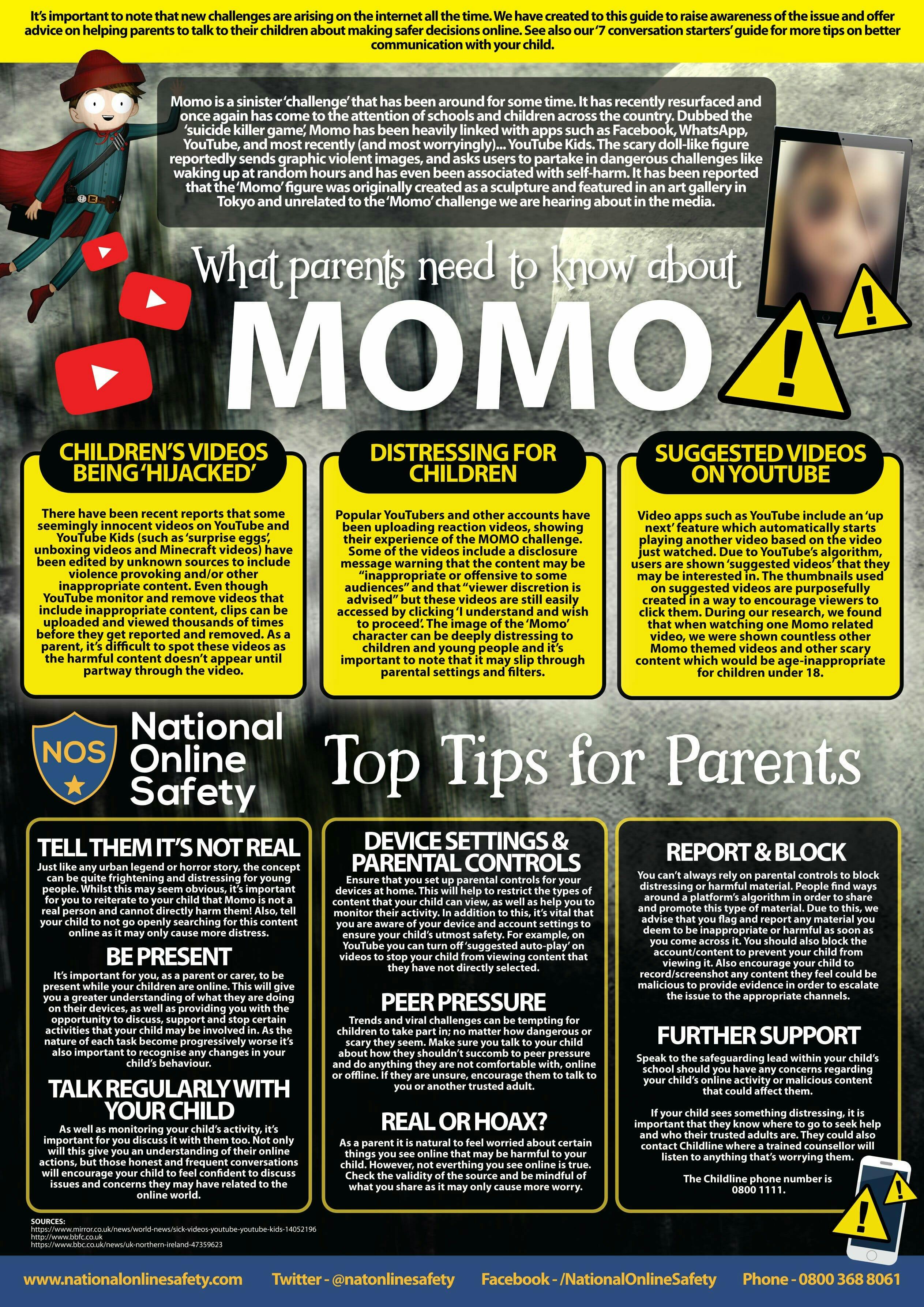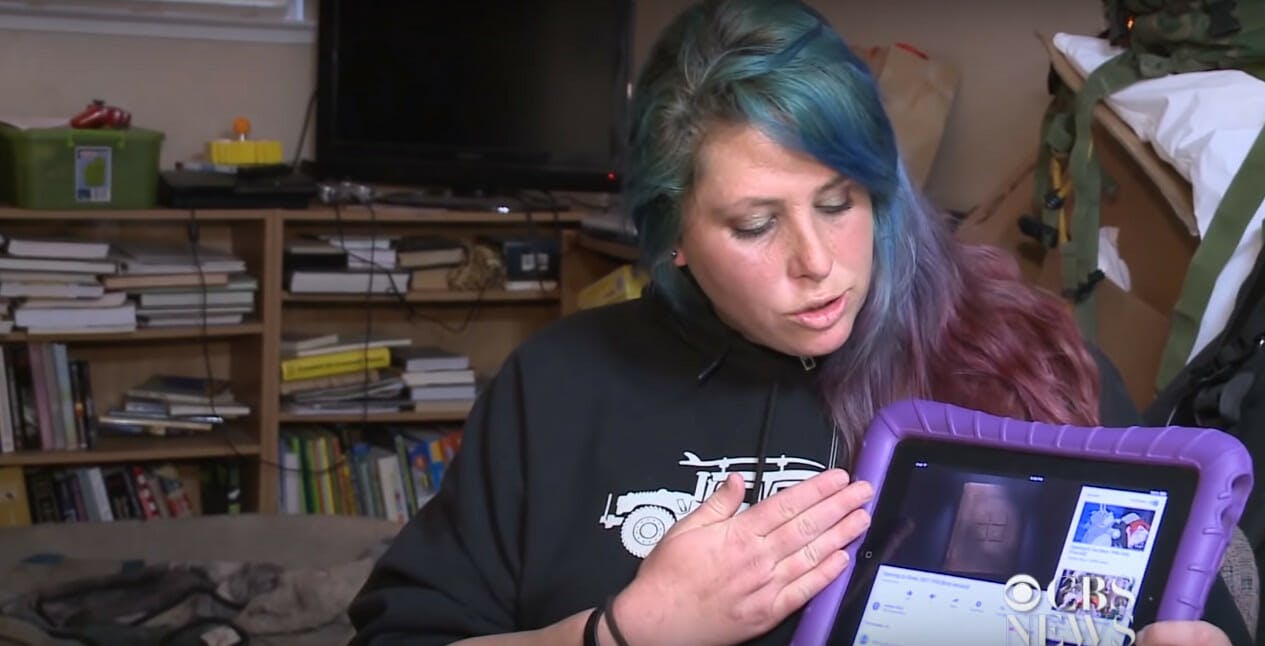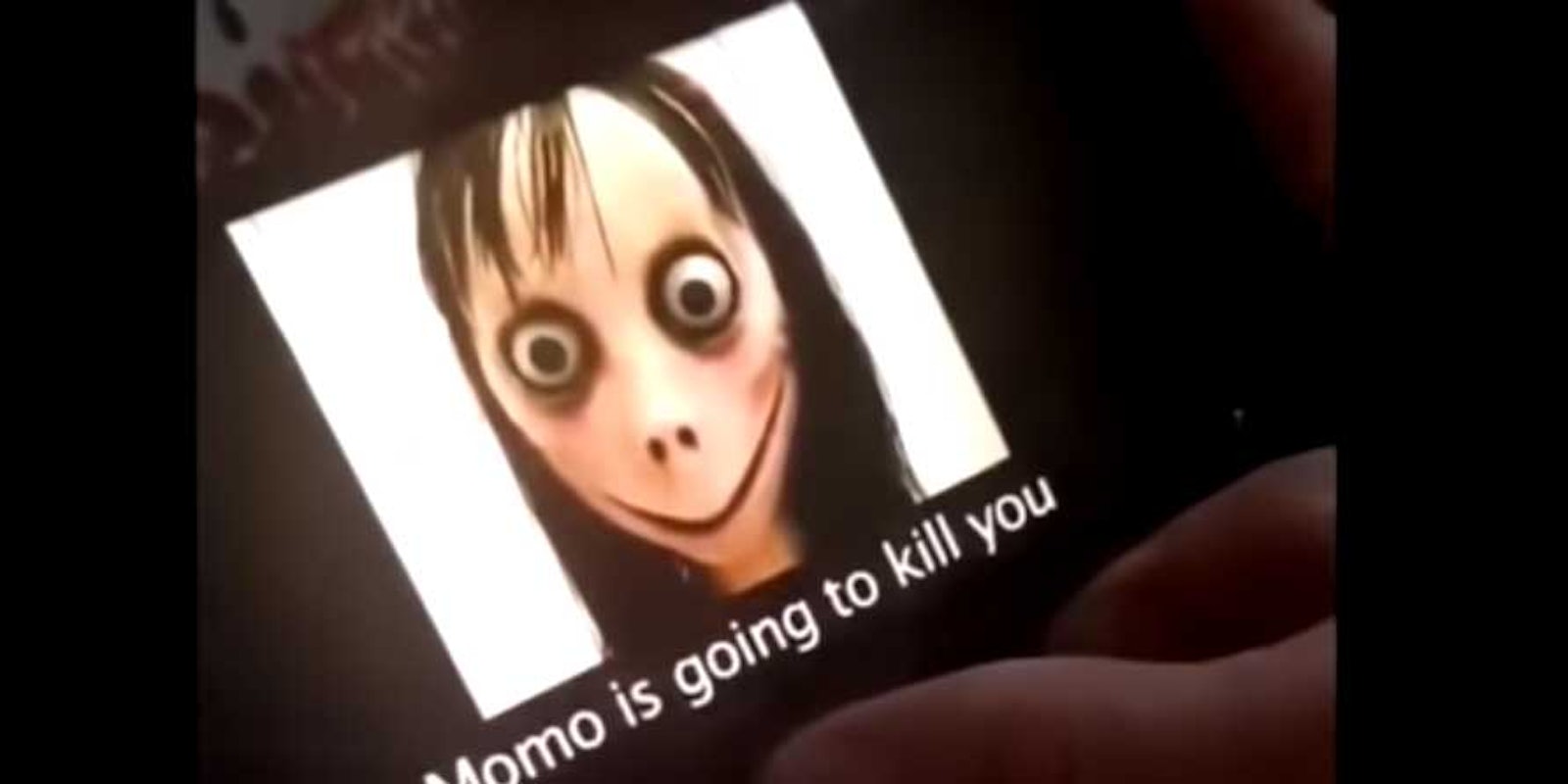The Momo challenge is an urban legend—for the most part. It exists but it doesn’t. It’s neither here nor there. But as we’ve seen with Slender Man, another famed internet boogeyman, it doesn’t take much to inspire real-life acts of violence and self-harm.
The Momo challenge reportedly urges children to die by suicide and/or engage in other harmful activities. The challenge went viral this week for reportedly appearing in the middle of seemingly harmless children’s videos on YouTube. (YouTube denies this is the case.) It’s also said to have infiltrated WhatsApp chats in the past.
There have been no confirmed reports linking the Momo challenge to deadly acts, despite widespread media coverage to the contrary, but that doesn’t mean that parents shouldn’t be concerned about their children being exposed to harmful things on YouTube. Known also as the Momo suicide challenge, it’s built on a scary-looking Japanese mask with freakishly big eyes that first appeared on Instagram in 2016. Schools in the U.K. have issued warnings, and British politicians are beginning to address the issue.
Kids are talking about it, making memes in jest, and it seems like the Momo character is everywhere you look online right now. So what’s actually going on here?
Momo challenge: What’s fake
Reports have gone as far as to claim suicides related to Momo in Argentina, France, and Belgium, though a direct link was never clearly established in these deaths.
On Tuesday, fact-checking website Snopes dismissed the challenge as “much more the products of fevered imaginations and lurid news reporting rather than real-life phenomena.” Certainly, tabloids have sensationalized the story and published those claims about international incidents without fact-checking.
British media has reported that the challenge is a hoax, too. The U.K.’s National Society for the Prevention of Cruelty to Children and the Samaritans, a British organization addressing mental health, said there’s no direct link between any harmful activity and the challenge, and that “the ensuing media hysteria could now be putting vulnerable people at risk by encouraging them to think of self-harm,” the Guardian reported. The UK Safer Internet Centre has called the phenomenon “fake news.”

Meanwhile, as the momentum grew over this supposed threat, people remained confused about who really saw it and whether it’s real. Kim Kardashian issued a warning on her Instagram story on Tuesday with the screenshot of someone’s Facebook post alarming people about the issue. The post, written by one Amyre Shonny, doesn’t provide a source for the information.
Snopes has quoted a YouTube influencer as saying the whole thing is an urban legend. “People are claiming what Momo is and what Momo does, but not that many people have actually interacted with the account,” says ReignBot in the video. “Finding screenshots of interactions with Momo is nearly impossible and you’d think there’d be more for such a supposedly widespread thing.”
YouTube has since flagged this video, as well as another one about the Momo challenge, as “inappropriate” and “offensive” for some audiences.
“Contrary to press reports, we’ve not received any recent evidence of videos showing or promoting the Momo challenge on YouTube,” a YouTube spokesperson told the Daily Dot. “Content of this kind would be in violation of our policies and removed immediately.”
The key distinction here is “challenge.” Momo, the creepy sculpture turned meme, is all over YouTube and has been for years. Eventually, parents were going to run into her.
Momo challenge: What’s real
You remember Slender Man, right? In 2014, young girls in Wisconsin stabbed their friend in the woods 19 times after reading an internet urban legend that instructed them to do so. Morgan Geyser was sentenced last year to serve 40 years under state mental health supervision. There is an HBO documentary, a bad horror film hit theaters in 2018, and the incident inspired a copycat attack where a 13-year-old in Ohio stabbed her mom.
These days, you don’t have to be an internet-savvy middle-schooler who peruses subreddits to find this stuff.
In the case of Momo, what exists is a creepy-as-hell clip. As shared in tweets, or other YouTube videos, Momo shows up with a voiceover of a child singing, “Momo is going to kill you. At night she’ll come / when you’re in bed / in the morning / you will be dead.”
At this point, it’s not some out-of-touch, irrational reaction to be alarmed by what parents on your Facebook are saying.
While the videos may have originated outside of YouTube and the YouTube Kids app, the prevalent and easy-to-find content leaves questions about safety. We’re already seeing incidents in the States.
A CBS report on Thursday talked to an American mom who says her autistic 12-year-old heard about Momo on YouTube and began behaving irrationally—turning on the gas stove because she says she was instructed to on YouTube by Momo.

“We appreciate people drawing problematic content to our attention, and make it possible for anyone to flag a video,” YouTube also told the Daily Dot this week. “Flagged videos are manually reviewed 24/7 and any videos that don’t belong in the app are removed.”
YouTube is at the moment limited in terms of options to combat inappropriate content reaching kids. On Thursday, it removed the comments section from videos featuring children and deleted channels it deemed dangerous to kids. On Friday, YouTube confirmed with the Verge that it had demonetized all Momo videos, which at least removes the financial incentive to create Momo videos.
Its “Child Safety on YouTube” memo restricts people from uploading content that may emotionally harm or encourage the emotional and/or physical harm of minors. “Never put minors in harmful situations that may lead to injury, including dangerous stunts, dares, or pranks,” reads one of its policies.
The suspension process for this content is often slow to deploy and comes with a three-strike rule for offenders.
“We have zero tolerance for predatory behavior on YouTube,” the policy reads. “If we believe a child is in danger based on content that has been reported to us, we’ll assist with investigations into the content by law enforcement.”
READ MORE:
- YouTube finally responds to the Momo challenge
- PewDiePie backs YouTube’s controversial response to pedophile content
- Logan Paul says he has brain damage that affects his empathy
YouTube simply has a poor record when it comes to inappropriate content insidiously reaching children by people who attack its algorithm.
In 2017, the Kids app was infiltrated by weird videos that sexualized cartoon characters. As the Daily Dot reported, YouTube was “easily hacked to abuse their most vulnerable audience.” YouTube offered a statement and tweaked some stuff to restrict the content.
YouTube has been playing bad press whack-a-mole ever since.
After BuzzFeed reported that anti-vaccination conspiracy theorists were making money on YouTube, the platform demonetized those channels. A YouTuber noticed that pedophiles were communicating via the comments on YouTube and distributing graphic content. A mom discovered videos that encourage self-harm on the Kids app. A YouTuber went viral for abusing his cat on-screen. After a crackdown pledge, YouTube was still reportedly hosting bestiality images.
Do you trust YouTube to babysit your children?
The Momo challenge is a hoax, yes, in that kids around the world are not killing themselves en masse after participating in a challenge. Yet parent outrage is plenty newsworthy because questionable content regularly gets pushed to kids on YouTube, and the company is not equipped to address it.
Momo is the terrifying face on an ongoing, yearslong issue. And now that the concept is out there, percolating in various forms across the web, how long can it be before someone tries to make it a reality?


